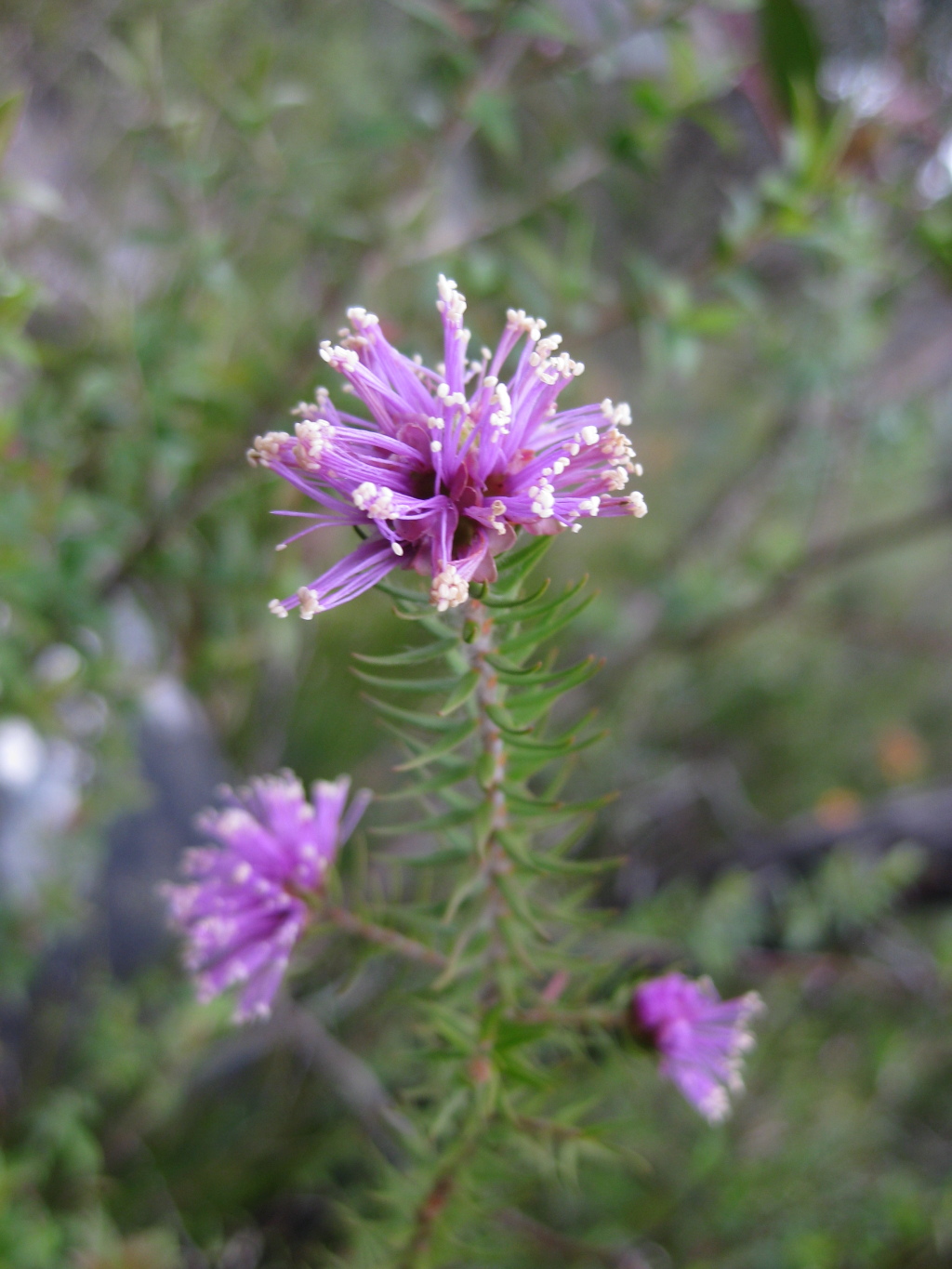Melaleuca
Shrubs or trees; bark rough, dark and fissured to pale, smooth, peeling and papery. Leaves opposite or alternate, rarely whorled, shortly petiolate to more or less sessile, terete to flat or compressed, entire, often gland-dotted. Inflorescences spike-like or in dense heads, oblong to cylindric, the axis tip generally developing into a leafy shoot. Flowers 5-merous, generally bisexual, mostly 1 or 3 per bract; bracts papery and soon shed, sometimes leaflike; bracteoles, when present, small and soon shed; hypanthium urceolate to campanulate; sepals more or less round and continuous with the hypanthium, sometimes becoming woody and persistent; petals more or less round, often with a short claw, exceeding the sepals; stamens numerous, exceeding the petals (sometimes only shortly), united at the base into 5 bundles opposite the petals; anthers versatile; ovary mostly 3-celled, half-inferior with few to many ovules in each cell; style with simple stigma. Fruit a woody loculicidal capsule opening at the summit with 3(–4) valves, often persistent on the stem and enlarging for many years; seeds numerous.
About 245 species, mostly Australian but extending into New Guinea and Malesia.
The genus is currently under revision (see note under Callistemon).
Spencer, R.D. (1996). Melaleuca. In: Walsh, N.G.; Entwisle, T.J., Flora of Victoria Vol. 3, Dicotyledons Winteraceae to Myrtaceae, pp. 1027–1034. Inkata Press, Melbourne.
 Spinning
Spinning



